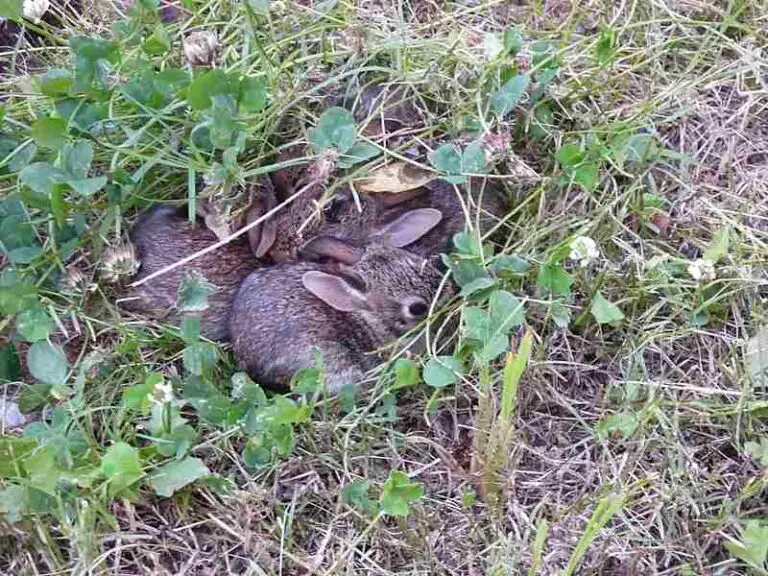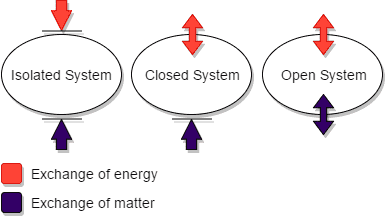11 Causes of Soil Erosion Explained
Causes of soil erosion are; forest fire, flooding, undulating topography, windstorms, gravitational influence, weak soil properties, excessive tillage, overgrazing, poor construction practices, deforestation, unsustainable mining, and climate change.
They may be broadly grouped into natural and anthropogenic causes.
This article discusses the causes of soil erosion, according to the outline below;
-Natural Causes of Soil Erosion
-Anthropogenic Causes of Soil Erosion
-Natural Causes of Soil Erosion
1). Naturally-Induced Forest Fire (as one of the Causes of Soil Erosion)
Forest fire (or wildfire) is a natural hazard that contributes to soil erosion.
The role of forest fires in soil erosion is a supportive one, which functions in combination with other causes of soil erosion like windstorm, flood, deforestation and soil degradation.
Naturally, forest fire can originate from lighting [10]. When such an event occurs, forests (and other vegetation-dominated ecosystems like grasslands) are destroyed.
The effects of this include habitat loss, biodiversity loss, and environmental degradation.
Loss of vegetation exposes the soil to adverse impacts of erosion agents. It also alters the energy pyramid, which is what provides a renewable supply of biomass and biochemical processes to enrich and protect the soil.
In areas where wildfires have occurred, there is usually a higher risk of further degradation through erosion, leaching, or desertification. This means that while wildfires do not directly cause soil erosion, they increase the risk and potential severity of erosion.
It is important to note that wildfires are also induced by manmade factors. Global warming, heatwave events, and other anthropogenic problems can lead to forest fires, and increase the risk of soil erosion.
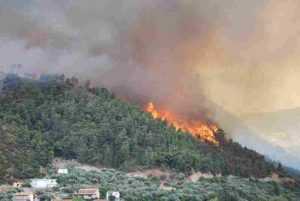
2). Runoff
Rainfall, flooding, ice melting, stream flow, runoff, and all factors related to water dynamics, are the most common and effective causes of soil erosion.
The concept of runoff is a broad one. It may refer to stormwater runoff, which is concerned with rainfall. It may also refer to water flow in streams, rivers and oceans. Some other environmental problems asides soil erosion are associate with runoff, such as stormwater pollution.
Areas with high rates of precipitation are most susceptible to soil erosion by runoff [13]. Also, the severity and effectiveness of erosion depends on the intensity of scouring that is caused by flowing water.
Multiple factors can influence this intensity of scouring during soil erosion. They include topography, soil type, structure and composition, soil exposure, and drainage.
The risk and severity of soil erosion by runoff are higher in regions with a steep-sloping or undulating topography [1]. Here, the intensity of scouring is increased due to gravitational influence.
Areas where soil has been exposed due to deforestation, urbanization, mining and other factors, are more prone to soil erosion than areas with vegetation cover.
Also, when soil infiltration is low due to excessive compaction or freezing, the volume of runoff increases, along with the severity of erosion. The same occurs where soil composition and structure are weak and easily altered by erosive forces.
There are various types of soil erosion that are caused by runoff. They include gully, sheet, splash and rill erosion [2].
Mitigating the risk of naturally induced runoff erosion can be achieved through soil conservation and water conservation practices like terracing, cover cropping, and building of water dams.
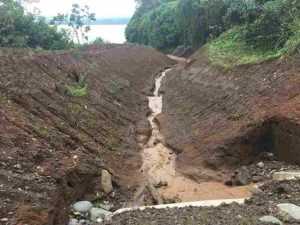
3). Undulating Topography (as one of the Causes of Soil Erosion)
Undulating topography is yet another cause of soil erosion.
As has already been stated in this article, the factor of topography functions in combination with other factors like runoff and gravity, to bring about soil erosion.
Parameters used to evaluate topography include slope or gradient, dip, strike and azimuth [8].
Basically, areas with undulating topography tend to have a steep slope. As runoff flows down the slope, its velocity increases, causing it to be more effective at scouring and erosion [3].
An evidence of the role of undulating topography in soil erosion can be found in hilly regions. In such regions undulating topography aggravates soil erosion, and leads to the accumulation of large volumes of weathered materials (soil, sediment or regolith) at the base of slopes.
Again, the relevance of topography in soil erosion totally depends on the hydrological characteristics of the region in question.
4). Natural Windstorms
When windstorms occur, they exert pressure on soil and rocks, and may cause erosion.
There are various natural sources of wind energy that are instrumental in soil erosion. They include variations in solar intensity, ocean dynamics, atmospheric pressure differences, and topographical conditions.
When wind from any of these natural sources comes in contact with exposed and vulnerable earth materials, there is usually a high risk of erosion.
It is important to note that the effectiveness of natural windstorms as one of the causes of soil erosion, depends on geographic and geologic factors. These factors include soil type, areal topography, climatic conditions, type of ecosystem involved, and the influence of seasonality.
Generally, wind erosion is more common and severe in areas prone to drought and desertification [5]. This is because such areas have loose, exposed soil and strong wind availability.
Other areas with strong winds and high erosion potential include arctic and alpine tundras [4].
Natural windstorms may operate independently to cause erosion, or they may operate in combination with other agents like rainstorms and runoff.
5). Gravitational Influence (as one of the Causes of Soil Erosion)
The force of gravity is one of the fundamental causes of soil erosion.
It is described as ‘fundamental’ because other causes of soil erosion are either less-effective or ineffective without gravity.
Another way to explain this is by stating that gravitational forces unify and control all dynamic aspects of soil erosion.
It is under the influence of gravity that erosive agents like wind and water are able to exert pressure on soil. It is also gravitational forces that redistribute or move the eroded soil from its original position to another [1].
Because gravity is abundant on the Earth’s surface, erosive agents are naturally able to scour the landscape and dislodge rocks and soil particles.
The effectiveness of gravity in soil erosion depends on topographic conditions. Where there is a level topography, erosion is less severe than in areas of undulating or steep topography.
6). Weak Soil Geotechnical Properties
The nature of soil in an area determines the effectiveness of erosive agents.
Generally, the risk of erosion increases as the geotechnical characteristics of soil become weaker.
Soils with high adhesion, permeability, and bearing capacity, are less susceptible to erosion than soils with low permeability, adhesion and bearing capacity.
The latter may be referred to as ‘erodible’ soils.
Aside geotechnical properties, the composition of soils also affects their rate of erosion. Soils that are compositionally dominated by resistant, insoluble minerals, are less prone to erosion than soils dominated by less-resistant, water-soluble minerals.
Although soil characteristic is a natural concept, there are some manmade factors that influence the physicochemical and geotechnical properties of soil. They include historical land-use patterns, urbanization, agriculture and mineral exploration.
-Anthropogenic Causes of Soil Erosion
7). Unsustainable Agriculture (as one of the Causes of Soil Erosion)
When unsustainable agricultural practices are implemented over a long period of time, the risk of soil erosion increases [12]. There are various practices that fall within this category.
Overgrazing is an example of a relatively-common agricultural practice that can be described as one of the causes of soil erosion.
In scenarios where the principles of sustainable agriculture are not observed, cattle are often allowed to overgraze within a given area of pastoral land. This entirely removes vegetation cover, and exposes soil to erosion [9].
Grazing cattle may also trample the soil and cause unhealthy compaction, which reduces permeability/infiltration and intensifies water runoff.
Aside overgrazing, other unsustainable farming practices that cause soil erosion include excessive tillage.
When soil is tilled in such a manner that destroys the structural resilience of the soil, it degrades the soils’ mechanical and geotechnical properties, and increase the risk of moisture loss, leaching and erosion [11].
Sustainable farming is the remedy to soil erosion caused by agriculture. Various practices of sustainable agriculture such as contour farming, no-till farming, composting, soil amendment, cover cropping and crop rotation, are effective to conserve and improve the soil, and to prevent erosion.
8). Poor Construction Practices (as one of the Causes of Soil Erosion)
Environment-friendly construction is one of the objectives of sustainable development [6].
When construction is not carried out in a sustainable manner, it can contribute to erosion.
There are various ways in which this can occur. One of them is through soil disturbance.
Because construction involves earthworks; such as compaction and excavation of soil, it can lead to unfavorable changes in soil structure. These changes may include loss of permeability, and reduction of soil mechanical resilience.
Poor construction practices can cause water-flow pathways to be sealed-off. This will increase the volume of stormwater runoff, as well as the severity of erosion.
Other practices that are related to construction, such as deforestation, can also make soil more vulnerable to erosion.
The remedy to erosion caused by poor construction practices is adoption of sustainable construction methods such as smart housing, and eco-friendly urbanization.
9). Deforestation
Deforestation is one of the most common, manmade causes of soil erosion.
When deforestation occurs; through logging, ‘forest management’, or urbanization; the soil loses its vegetative protection from agents of erosion like wind and water.
Lack of such protective cover makes the soil vulnerable to degradation, which in this case would be in the form of erosion.
Reversing the effects of deforestation on soil erosion-risk, is possible through revegetation and reforestation.
10). Unsustainable Mining (as one of the Causes of Soil Erosion)
Unsustainable mining is any approach to mineral excavation that does not include measures for environmental remediation and protection.
With respect to soil erosion, unsustainable mining exposes earth materials through excavation. Such unsustainable mining practices alter the structural resilience of soil, as well as the soil’s physicochemical properties.
As a result, the risk of erosion in areas affected by unsustainable mining is relatively-high [7].
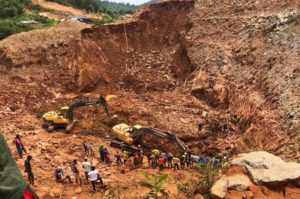
11). Climate Change
Climate change is an overarching manmade cause of erosion.
This is because it is related to multiple other causes of soil erosion, such as deforestation, and unsustainable agriculture.
Climate change can aggravate other environmental problems like desertification, which expose soil to degradation.
Mitigating the effect of climate change on soil can be achieved by adopting renewable energy and sustainable approaches to agriculture, mineral exploration and construction.
Conclusion
The causes of soil erosion are;
- Naturally-Induced Forest Fire
- Flooding
- Undulating Topography
- Natural Winds
- Gravitational Influence
- Weak Soil Geotechnical Properties
- Excessive Tillage
- Overgrazing
- Poor Construction Practices
- Deforestation
- Unsustainable Mining
- Climate Change
References
1). Balasubramanian, A. (2017). “Soil Erosion- Causes and Effects.” Available at: https://doi.org/10.13140/RG.2.2.26247.39841. (Accessed 27 August 2022).
2). Bashir, S.; Javed, A.; Bibi, I.; Ahmad, N. (2017). “Soil and Water Conservation.” Available at: https://www.researchgate.net/publication/320729156_Soil_and_Water_Conservation. (Accessed 27 August 2022).
3). Bisschop, R.; Visser, P. J.; Rhee, C.; Verhagen, H. J. (2010). “Erosion due to high flow velocities: A description of relevant processes.” Coastal Engineering Proceedings. Available at: https://doi.org/10.9753/icce.v32.sediment.24. (Accessed 27 August 2022).
4). Borysiak, J.; Mickiewicz, A.; Pleskot, K.; Rachlewicz, G. (2020). “Dryas aeolian landforms in Arctic deflationary tundra, central Spitsbergen.” Polish Polar Research 41(1):41-68. Available at: https://doi.org/10.24425/ppr.2020.132569. (Accessed 27 August 2022).
5). Brown, L.; Nickling, W. G. (2003). “Desertification and wind erosion.” Annals of Arid Zone 42(3):347-370. Available at: https://www.researchgate.net/publication/288134184_Desertification_and_wind_erosion. (Accessed 27 August 2022).
6). Czajkowska, A. (2018). “The role of sustainable construction in sustainable development.” 2018 MATEC Web of Conferences 174(3):01027. Available at: https://doi.org/10.1051/matecconf/201817401027. (Accessed 27 August 2022).
7). Dissanayake, C. B.; Rupasinghe, M. S. (1996). “Environmental impact of mining, erosion and sedimentation in Sri Lanka.” International Journal of Environmental Studies 51(1):35-50. Available at: https://doi.org/10.1080/00207239608711069. (Accessed 27 August 2022).
8). Farhan, Y. I.; Anbar, A. H.; Enaba, O.; Al-Shaikh, N. (2015). “Quantitative Analysis of Geomorphometric Parameters of Wadi Kerak, Jordan, Using Remote Sensing and GIS.” Journal of Water Resource and Protection 07(06):456-475. Available at: https://doi.org/10.4236/jwarp.2015.76037. (Accessed 27 August 2022).
9). Kairis, O.; Karavitis, C. A.; Salvati, L.; Kounalaki, A.; Kosmas, C. (2015). “Exploring the Impact of Overgrazing on Soil Erosion and Land Degradation in a Dry Mediterranean Agro-Forest Landscape (Crete, Greece).” Arid Land Research and Management 29(3). Available at: https://doi.org/10.1080/15324982.2014.968691. (Accessed 27 August 2022).
10). Latham, D.; Williams, E. (2001). “Lightning and Forest Fires.” Available at: https://doi.org/10.1016/B978-012386660-8/50013-1. (Accessed 27 August 2022).
11). Mhazo, N.; Chivenge, P.; Chaplot, V. (2016). “Tillage impact on soil erosion by water: Discrepancies due to climate and soil characteristics.” Agriculture Ecosystems & Environment 230:231-241. Available at: https://doi.org/10.1016/j.agee.2016.04.033. (Accessed 27 August 2022).
12). Nwokoro, C. V. (2018). “Evaluation of Impact of Unsustainable Agricultural Practices on Rural Poverty and Environmental Resource Management in Ogoni, Nigeria.” Available at: https://www.researchgate.net/publication/332209156_Evaluation_of_Impact_of_Unsustainable_Agricultural_Practices_on_Rural_Poverty_and_Environmental_Resource_Management_in_Ogoni_Nigeria. (Accessed 27 August 2022).
13). Ouri, A. E.; Golshan, M.; Janizadeh, S.; Cerdà, A.; Melese, A. M. (2020). “Soil Erosion Susceptibility Mapping in Kozetopraghi Catchment, Iran: A Mixed Approach Using Rainfall Simulator and Data Mining Techniques.” Land 9(10):368. Available at: https://doi.org/10.3390/land9100368. (Accessed 27 August 2022).
